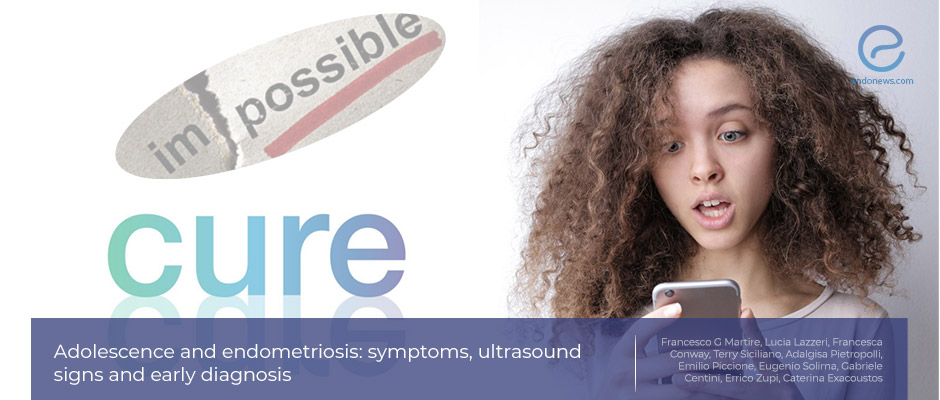Adolescent endometriosis: Diagnostic clues?
Nov 16, 2020
It is important to make a proper, early, noninvasive diagnosis of endometriosis in adolescents.
Key Points
Highlights:
- The rates of dysmenorrhea, dyspareunia, and heavy menstrual bleeding in adolescents are significantly higher in adolescents showing ultrasound signs of endometriosis.
Importance:
- By combining symptom reports and pelvic ultrasound findings, an early, accurate and noninvasive diagnosis of endometriosis can be made in young women.
What's done here:
- Researchers examined the ultrasonographic presence of different forms of endometriosis. They also compared clinical symptoms in 227 young women who underwent ultrasound.
Key Results:
- Endometrioma was the most common type of endometriosis. Adenomyosis and deep infiltrating endometriosis constituted 4% to 5% of the examined adolescent population.
- Of 270 cases, 36 showed ultrasound signs of pelvic endometriosis in at least one of its forms.
- Ultrasound signs of endometriosis were seen in 20% of the adolescents with dysmenorrhea, 33% with dyspareunia and dyschezia, and 44% with gastrointestinal symptoms. Gynecologic evaluation is necessary for adolescents showing these symptoms.
- The pain can guide the ultrasound diagnosis and lead to proper and timely medical therapy.
- Dysmenorrhea should be described in educational institutions as an important symptom that should prompt investigation.
Limitations:
- The participants of the study included an unselected consecutive population of adolescents requiring an ultrasound examination. This may hide a bias because only 24% of the participants were asymptomatic.
Lay Summary
The rates of dysmenorrhea, dyspareunia, and heavy menstrual bleeding in adolescents showing endometriosis signs on ultrasound are significantly higher compared to those without. This is according to a retrospective observational study recently published in the journal "Fertility and Sterility".
The team led by Dr. Martire analyzed 227 young women who underwent pelvic ultrasound examination. They examined the ultrasonographic presence of different forms of endometriosis and the associated clinical endometriosis symptoms.
In the current study, the median age of the participants was approximately 18 years and 70% of them were older than 16 years. Dysmenorrhea was found in 54.4% of 270 patients and heavy menstrual bleeding in 28.1%.
Researchers identified ultrasound signs of pelvic endometriosis in at least one of its forms (endometrioma, deep infiltrating endometriosis, adenomyosis) in 13.3% of the participants. Endometrioma was found to be the most common type of endometriosis and more than half of the adolescents with endometrioma were symptomatic.
Researchers found that 20% of the adolescents with dysmenorrhea, 33% with dyspareunia and dyschezia, and 44% with gastrointestinal symptoms had ultrasound signs of endometriosis. Based on these findings, they recommend gynecologic pelvic evaluation for adolescents showing these symptoms. They also underlined the importance of dysmenorrhea as a symptom that requires further investigation should be described in schools.
Consequently, the data of this study showed the importance of a proper, early, noninvasive diagnosis of endometriosis in young women, combining symptoms and pelvic ultrasound findings.
Research Source: https://pubmed.ncbi.nlm.nih.gov/33036795/
adolescence diagnosis endometriosis pain ultrasound spoonie endometrioma

